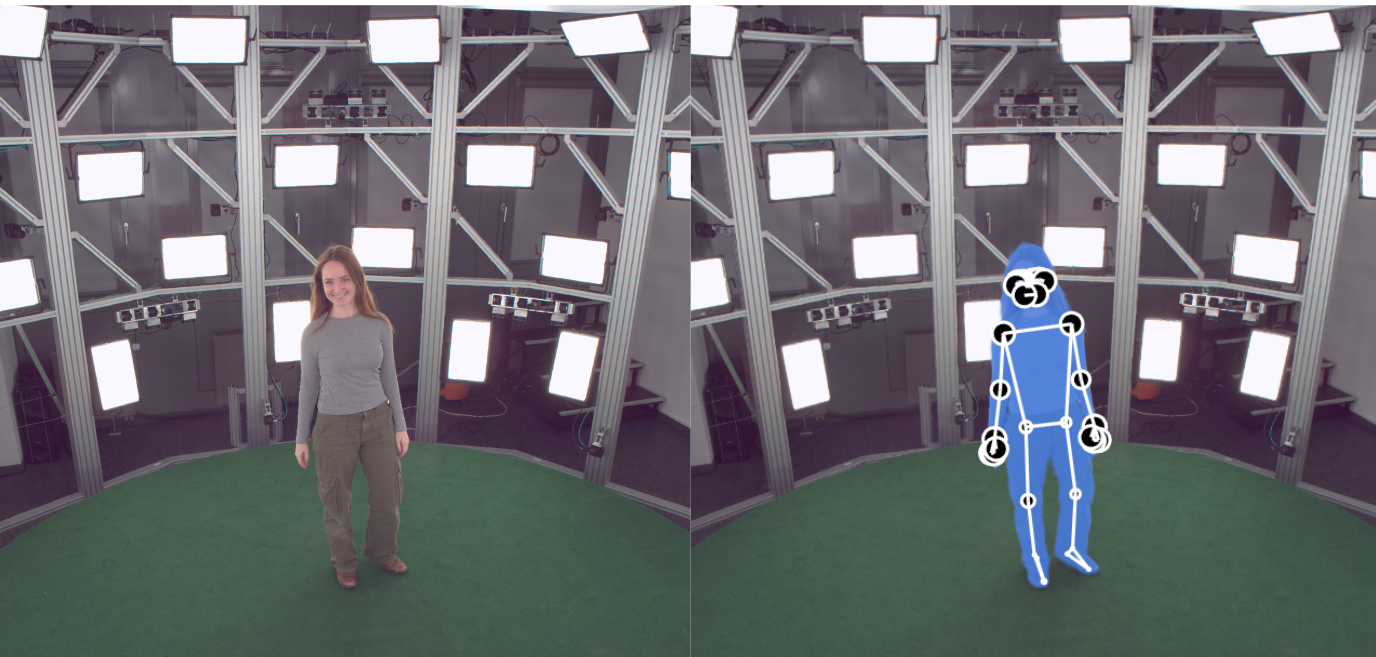Open Thesis Topics
If you are interested in any of the topics below or have an idea of your own, please feel free to send an e-mail to droege@cs.uni-bonn.de.
3D Animal Reconstruction
Gaussian Splatting for Realistic Fur Textures
This thesis project focuses on creating more visually realistic 3D animal models by improving existing reconstruction techniques. While models like CASA (Category-Agnostic Skeletal Animal Reconstruction, NeurIPS 2022) have made significant progress in generating accurate skeletons and body shapes from 2D images, they lack fine surface details.
To address this, this thesis explores the use of Gaussian splatting to simulate intricate textures, such as fur, on CASA-generated meshes. The primary objectives include developing and optimizing a Gaussian splatting method for fur textures to improve the appearance of 3D animal models. Furthermore, there are also options for extending the system to include animations and/or capturing videos.
Deep Image Matting
Real-Time Matting: Improving Accuracy with Infrared Data
Real-time deep image matting is an important first step for many real-time reconstruction methods and an important part of the pipeline in the Capture-Dome. The objective is to improve real-time matting accuracy by incorporating additional infrared (IR) image data.
This approach builds on Real-Time High-Resolution Background Matting by encoding IR information alongside color data in the base structure of the matting network. This extra layer of IR data provides detail that color data alone can’t capture, resulting in a much cleaner separation of foreground and background. To make this possible, we’ll use the Mitsuba Renderer to simulate IR and color data, creating a realistic training dataset for the network.

Camera Rig with two IR-Cameras (left, right), RGB-Camera (center left), and projector (center right).
Cross-Attention for Improved Background Integration
In contrast to real-time deep image matting, which prioritizes speed, offline methods focus on achieving the highest possible quality. In a capture-dome setup, where background matting benefits from capturing an additional empty scene, a robust solution is crucial for offline reconstruction approaches.
In this thesis the objective is to extend Vision Transformer (ViT)-based matting by replacing the traditional trimap input with a background image. Through the introduction of cross-attention between foreground and background embeddings, this approach aims to deliver more precise, context-aware matting. The key objectives include designing an effective cross-attention mechanism and achieving state-of-the-art performance in background replacement.
3D Pose Estimation
Multi View Landmark Detection
In this thesis, we aim to integrate the MediaPipe Pose Landmarker into the Capture-Dome software for multiview 3D pose estimation. By utilizing MediaPipe’s robust 2D landmark detection across multiple synchronized camera views, the goal is to reconstruct accurate 3D poses. 
Landmarks created via MediaPipe Pose Landmarker
3D Shape Reconstruction
Neural Radiance Fields (NeRF) with Infrared Images
Neural Radiance Fields (NeRF) (e.g. InstantNGP) have revolutionized 3D reconstruction by synthesizing high-quality novel views from 2D images. However, NeRF struggles with precise shape reconstruction, especially in challenging lighting conditions or textureless regions.
This thesis investigates the integration of infrared (IR) stereo images with active illumination to improve the accuracy of NeRF. The approach utilizes IR stereo cameras with projected patterns to provide additional geometric cues missing from standard RGB inputs.
Image Processing
Joint Debayering and Denoising
This project explores a joint approach to debayering and denoising to improve image quality, targeting our capture stage data. Possible extensions include leveraging temporal consistency across frames to enhance detail preservation and noise reduction.